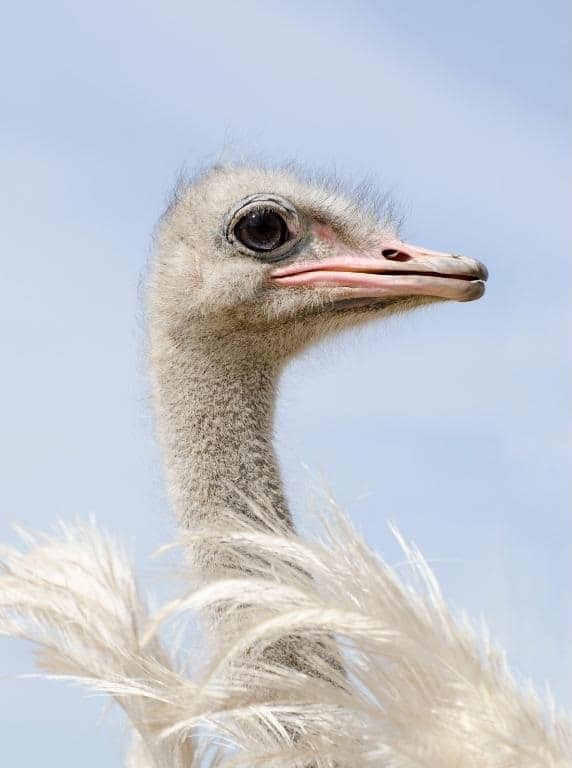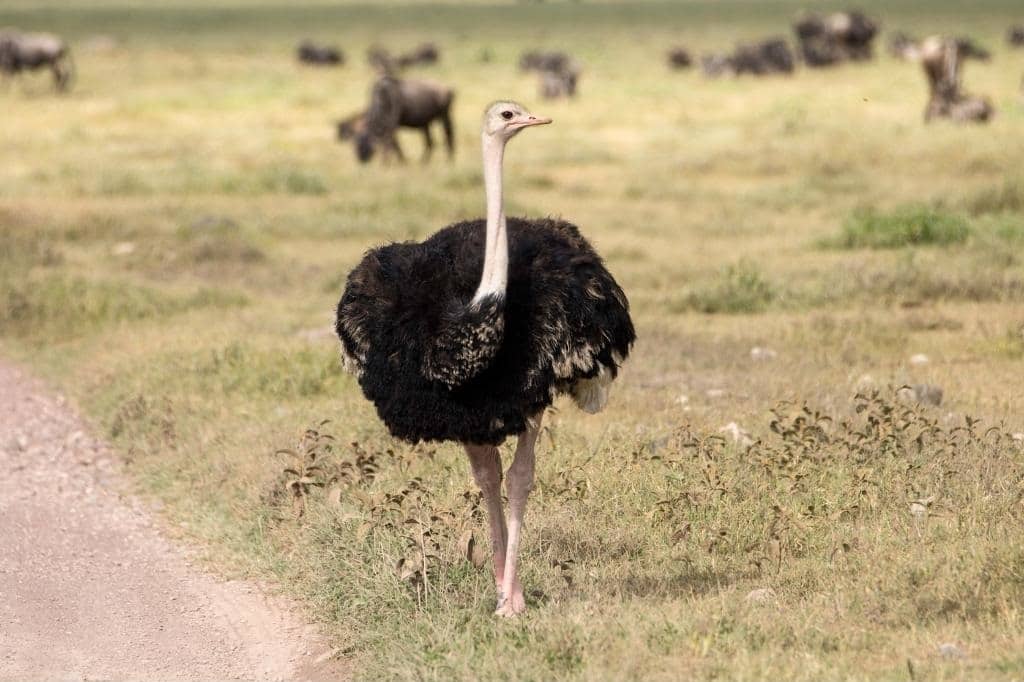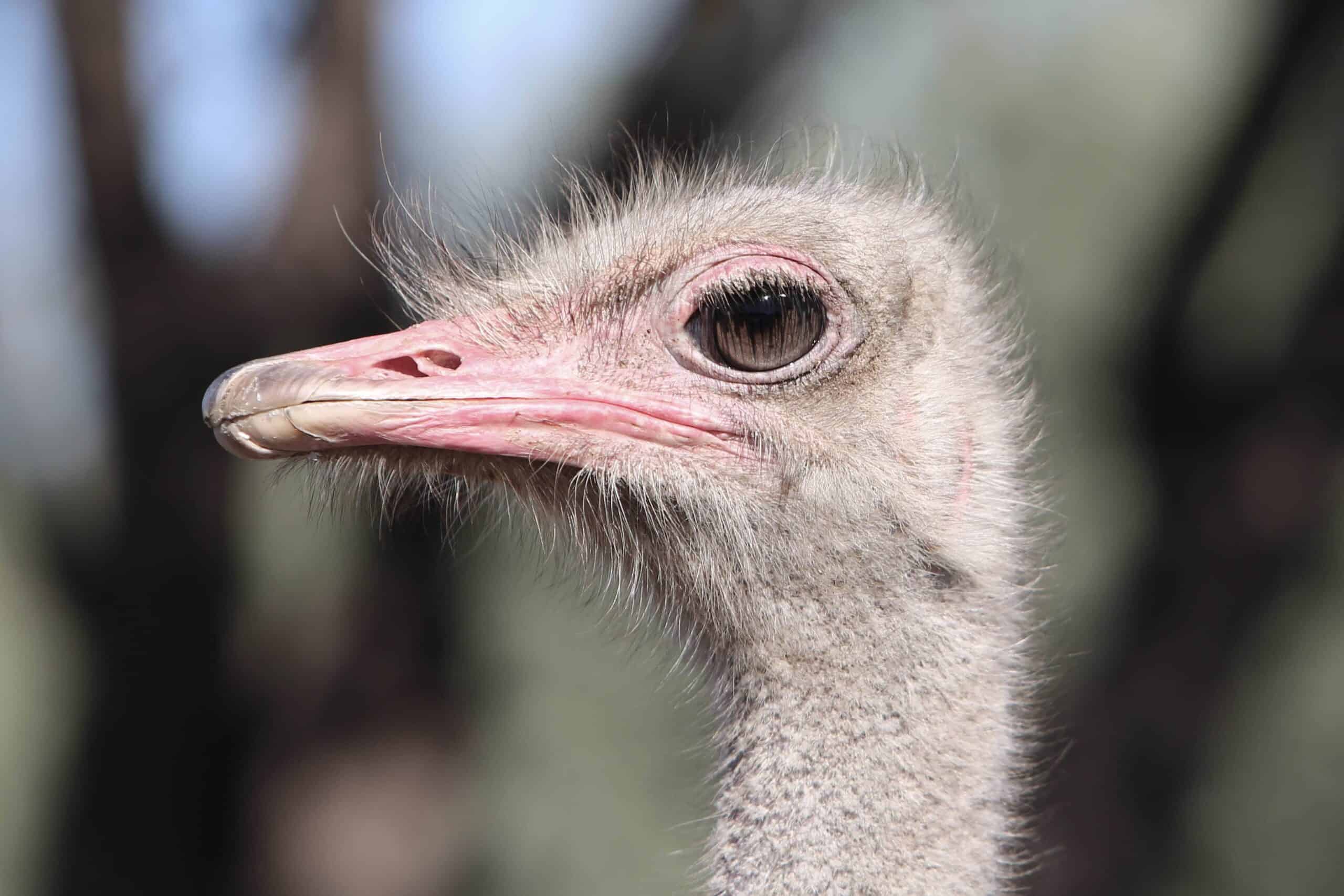Whether you heard this riddle at a party on in a game, it’s probably got you on the edge of your seat. You might think the answer has something to do with how smart an animal is. It makes sense to assume that a smaller brain means lower intellectual capacity.
This holds true to some extent. The bird in question isn’t very good at eluding predators because it runs in circles. It’s also one of the few flightless birds. At the same time, these birds have a tremendous running speed and enhanced vision.
Without any further ado, let’s look at the answer for the highly puzzling question: which bird has a brain smaller than either of its eyeballs?
The Short Answer…
The bird which is surprisly has a brain smaller than its eyeball is the ostrich. Ostriches are the largest birds in the animal kingdom. As such they have large eyes too. This is why an ostrich’s eyes are larger than its brain. But that doesn’t mean ostrich are stupid or nerd or can easily be fooled. In fact, they are even smarter than others and with their large size, they easily keep away birds and predators.
However, like other birds, ostrich also cannot see glass despite large eyes.

Which Bird Has A Brain Smaller Than Either Of Its Eyeballs?
An ostrich eye is about the size of billiard balls. That is five times bigger than human eye. If you’ve ever played pool, you’ll know that these balls are way bigger than your eyes. They’re also bigger than the eyes of any other animal around you. Seeing one of them should give you a clear idea of how big an ostrich’s eyes are.
To understand why they eyes are so big, you should think about the size of an ostrich. The average height for male ostriches is between 2.1 and 2.8 meters while the average height for female ostriches is between 1.7 and 2 meters.
So the shortest female ostrich would be as tall as a 5’6 human being and the shortest male ostrich would be as tall as a 6’9 human being. Keeping in mind that this is the lower end of the range, it’s fair to assume that ostriches are taller than human beings on average.
Given their huge size, it is understandable why their eyes are huge too. Ostriches’ long legs are another notable feature of this bird.
Since the head is small, there isn’t a lot of space inside. Consequently, the ostrich’s brain is quite small.
In short, ostrich eyes are extraordinarily big and an ostrich brain is extraordinarily small. So it is only logical that the eyes are bigger than the brain.

How Long & How Wide Is Their Eye?
If you don’t believe this, let’s take a look at the numbers.
The diameter of an ostrich’s eyes is 2 inches from front to back. For reference, this makes their eyes five times bigger than our eyes. If that sounds like a lot, it’s because it is.
An ostrich’s brain is 2.3 inches long and 1.7 inches wide. This is smaller than one eyeball.
What’s more, an ostrich brain isn’t just small, it is lightweight as well. The brain weighs 0.9 ounces and represents only 0.015% of an ostrich’s total body weight.
This isn’t a common phenomenon, especially among birds. Most birds’ brains are heavier. If you were to compare an ostrich’s brain’s weight with the weight of other birds’ brains than you’d find that an ostrich’s brain is on average seventeen times lighter than other birds.

What Are The Benefits of Large Eyes?
Having large eyes is quite good for ostriches.
Living creatures adapt to their surroundings and develop features that help them survive in the wilderness. This is why wolves and bears that live in the cold have thick fur to stay cold while giraffes have a long neck so they can reach leaves on tall trees.
The whole animal kingdom has features that help it survive and an ostrich’s eyes are no different. They offer this land animal excellent benefits.
Wide Range Of Vision
Large eyes offer maximum vision. Since the eyeballs are so big, an ostrich’s eye has great peripheral vision. Consequently, they can detect predators coming from a mile away.
Once an ostrich spots a predator, it can respond one of two ways. The first option is using its powerful legs and running. Since these birds are super fast, they can usually outrun natural predators. And the same goes vice versa. If they were about to get food like cranberries, they will appear suddenly like birds.
If running isn’t possible, the ostrich can instead choose to attack the predator with its legs. They’re quite strong and can pack a punch, causing serious harm to the attacker.

Can See Details
Another benefit of these large eyes is that ostriches can see phenomenal details of predators from far away. This is because the eyes have a high number of photoreceptor cells.
When combined with the sheer size of the image from the lens allow the ostrich to see animals in the distance with a lot of detail. So they can very clearly tell if an animal approaching them is a predator or a harmless animal.
Then they can react accordingly. This benefit comes in handy when surviving in the wild.
Can Ostrich See Glass?
Every year thousands of birds gets killed by hitting to windows, however, bird has a brain smaller than either of its eyeballs, can ostrich see glass?
Like other birds, ostrich eye’s is no different and ostrich cannot see glass. Despite its sharp and wide range vision, ostrich like many other birds cannot identify glass and will probably hit it to the glass if windows come in front. When birds see glass, they assume it either a tunnel or landscape especially when there’s a line of sight all the way through the building with windows on two walls.
What Do Ostrich Eat?
If you don’t know, ostrich feeds on plants, roots, seeds and fruits such as watermelon and vegetables like cucumber. But also eat insects, snakes, lizards, rodents and similar smaller animals. However, they also eat sand and pebbles to help grind up their food inside their gizzard. A gizzard is where is a small pounch where food is chopped and grined before its send to stomach.
What Are The Benefits of Ostrich’s Eyelashes?
With one of the largest eyes, ostrich are also equipped with long, thick eyelashes that protects ostrichs eyes from sandstorms. Because ostriches mostly live in sand and dust areas that can damage their vision, their eyelashes help from it.
Other Interesting Facts
In addition to an ostrich’s brain being smaller than its eyes, there are some other interesting facts about this bird.
Whether you’re a bird enthusiast or like knowing fun facts so you can solve crossword puzzles, you’re bound to enjoy this list.
Ostriches have three stomachs. Contrary to popular belief, ostriches only have one hear and do not bury their heads in the sand.
Ostriches are the fastest two legged runners and can sprint at over 70km/hr.
Interestingly, ostrichs can see colour and also ostrich depend on their eye and figure out about a predator up to 3.5km far but at night about 50 metres.
Ostriches have 2 meter long wings but can’t fly. That also means they cannot fly in circle either. These wings are instead used in mating displays, to provide shade and cover to chicks, and to conserve heat in winter months.
When faced with a threat or danger, ostriches don’t typically stick their head in the ground. They have powerful long legs and use them as a weapon to protect themselves. These legs can be used to kill a human or lion.
An ostrich’s eggs are the largest of any living bird. The weight of one egg is equal to the weight of two dozen chicken eggs.
Ostriches don’t have teeth and swallow pebbles to grind their food such as chia seeds. That’s all to which bird has a brain smaller than either of its eyeballs.



